► Cars to buy now
► £1500-£20,000+
► Future-proof fun
Nestled between Joe Exotic and sea shanty headlines, a piece of huge news broke. One that will affect all car enthusiasts in some way.
We’re talking about the petrol/diesel ban of 2030. Is petrol a thing of the past? Of course not. But in the coming years, other modes of transportation are set to become the new normal.
UK pure electric car sales in 2020 were up 185.9% compared with 2019, despite overall car sales dropping to their lowest levels since 1992.
In a fairly close future, ICE cars will be for high days and holidays. Something for special occasions. We might even drop the c-bomb here. That’s right, you might even become a classic car owner in the future.
Skip to the cars?
That image may conjure up old men sitting on camping furniture in a car park talking about Rover serial numbers, sure. But it needn’t be like that.
The other thing associated with classic cars is astronomical pricing. And like with the old men talking about Rovers (panama hat on the parcel shelf, of course), it needn’t be like that either. Especially if you buy now, rather than just before 2030 when demand will (surely) peak.
John Mayhead, head of valuations for insurance and valuations company Hagerty UK, said: ‘Throughout all of the economic upheavals of the last few years, two areas of the market have remained very active: the top (£1m+) and the enthusiast (typically sub-£50,000).
‘We saw a spike in the enthusiast end of the market after the first lockdown, and the sub-£50k market continued rising for the rest of 2020. For example, Hagerty Price Guide values of the MGA 1500 roadster, a typical traditional classic, have risen from an average of £25,125 to £27,125 in the last six months.
‘In the same period, the Porsche 924 Lux, a rising modern classic, has increased from £8100 to £8550. We think that while there is petrol still available, popular classics will still be bought and sold by enthusiasts.’
So then, what would we buy now in anticipation of prices rising before 2030?
Best used cars 2021 (for enthusiasts)
Porsche Cayman (987)
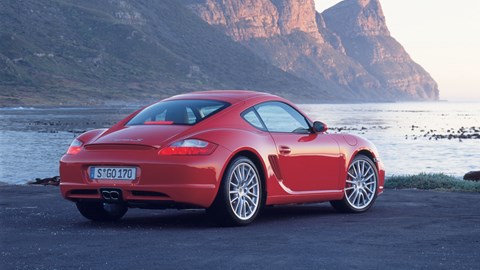
Price from new: £36,220
Price now: £10,000-£20,000
An obvious choice, we know. But still. The 987-era Cayman is largely similar to the Boxster except it has a fixed hard-top roof. This means it’s both stiffer and more sought-after than the convertible.
It’s achingly good to drive. Probably the best car to drive in this price range. Different engine sizes and levels of power are on offer depending on how deep your pockets are.
A 260-litre boot at the back and a 150-litre one at the front even means it’s practical. Yes, servicing is expensive.
Watch out for: Trackday specials. Lack of service history. Leaking radiators. Knocking suspension could mean worn arms.
Ford Mustang

Price from new: £39,420-£49,085
Price now: £20,000+
If you’re gonna do the whole buying a used petrol car for fun times thing, a muscle car has to be on your shopping list.
We’re talking about the current Mustang which has been around since 2015. You can spend close to £50k for a new one… which is why a used one makes so much sense.
Prices for 2.3-litre four-cylinder models are getting down to the £20k mark now. V8s still demand a premium – but there’s not much in it. Early V8s ‘make do’ with 415bhp (compared with new cars’ 443bhp) but just think of the noise. Autos and manuals are available, and – good news – there are plenty of used models out there that aren’t horrendously spec’d.
A lot of car, power, and poise (even in four-cylinder form) for the money.
Watch out for: Missing service history, rubbish tyres, gauche modifications.
Mazda MX-5
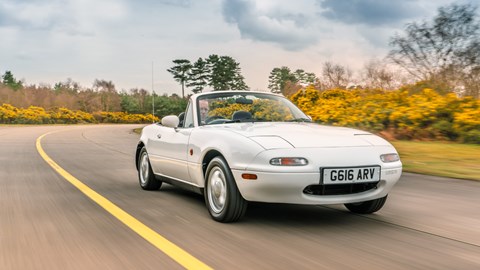
Price from new: £14,249
Price now: £1500-£5000+
For the last ten years or so classic car magazines have been tipping the MX-5 as ‘one to watch’ for price rices.
We reckon MX-5s will never be worth that much money despite them following the god-like formation of nat-asp engine, manual gearbox and rear-wheel drive.
We’d recommend going for a Mk1 (or NA in Mazda speak) because pop-up headlights.
British models tend to be worth more than Japanese imports. Both are great. Search for one that’s been garaged and loved. Catalysed 1.6-litre models make do with 88bhp. A non-cat 1.6-litre makes 114bhp, while the 1.8 makes 130bhp.
Watch out for: Rust, especially around the sills. Hoods aren’t that expensive to replace, but with so many on the market, you may as well try and go for one that doesn’t need fixing. Rust, again.
Peugeot 208 GTI by Peugeot Sport

Price from new: £22,665
Price now: £8000-£15,000
We needed a hot hatch in this list. The Peugeot 106 Rallye was originally earmarked… but is £18k for a hot hatch a bit much?
The 208 GTI by Peugeot Sport isn’t really the spiritual successor to the 106, neither the 205 GTI, which is also astronomically priced.
It is instead a cracking hot hatch in its own right. And like with a lot of old French stuff, it’s undervalued.
It’s not the snappiest of car titles, but that ‘by Peugeot Sport’ suffix means a lot. Primarily, the limited-slip differential makes it one the most agile hot hatches on the planet.
Watch out for: Sticking handbrakes, knocking suspension, choice modifications.
Jaguar XK8/XKR
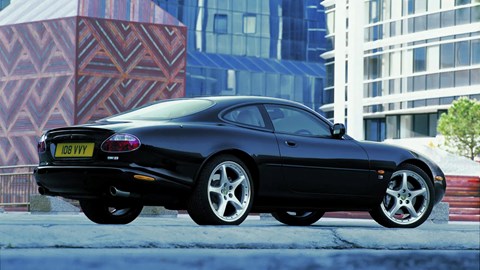
Price from new: £47,950
Price now: £2500-£15,000+
Sure, an old Jag that has a definite whiff of leather on willow. But what an old Jag. The XJ-S replacement was designed from the outset to be sportier, and it really succeeded.
Yes, it still wafts like a Jaguar should. But the XK8 really goes well too – thanks to that all-new 4.0-litre V8.
Those early 4.0-litres did suffer from premature engine wear thanks to the old nikasil-coated cylinder liners versus cheap supermarket fuel battle. The later 4.2-litre engines are more reliable – but more expensive.
XKR is the one to go for, speed enthusiasts. Adding a supercharger to the mix results in 370bhp.
Watch out for: Jerky changes from the ‘box, uneven tyre wear, non-functioning electronics.
Range Rover (L322)
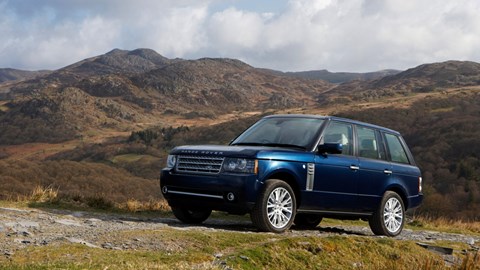
Price from new: £70,000
Price now: £2500-£20,000+
Nothing quite separates you from the proletariat like a Range Rover. Land Rover doesn’t use that tag line in its adverts, but it’s what it wants to say.
These L322 cars (made between 2002 and 2012) are the last Range Rovers before they got just a bit too bling. Thanks to the ravages of time, this Range Rover might even be considered dignified. Especially as it could be ordered with – wait for it – 16-inch wheels. Even the cheapest new Ford Fiesta comes with 16-inch wheels now.
We digress. The main point of these is that they are hugely comfortable and practical while costing the same to buy as a high-end MacBook.
Watch out for: Sealed-for-life gearboxes lunching themselves, worn driveshafts, failed O-ring seals, leaks on the air suspension, rust, errant warning codes… we could go on.
Audi TT (8N)
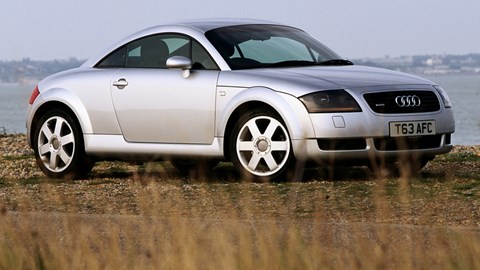
Price from new: £24,050-£29,000
Price now: £1500-£9000
Amazing to think that the TT is 23 years old and that the design first debuted at the 1995 Frankfurt Show.
Beyond being just a car, the TT has won numerous design awards. It came to symbolise modern design in the early 2000s. Hugh Grant drove one in 2002’s About a Boy.
Available as a roadster or coupe, front- or four-wheel drive, 1.8-litre four-cylinder or 3.2-litre V6, too.
Modern road tests paint it as being a bit dull to drive, but contemporary reviews are more complimentary.
Watch out for: Misfires on the 1.8-litre engine, non-functional digital fuel gauges, and sticky clutches. Parts can be pricey.
Maserati Quattroporte

Price from new: £77,000
Price now: £9000-£20,000
If you scoff at the idea of paying £300 for a dash repair on the TT above, you should probably stop reading about the Quattroporte.
There’s a lot of Ferrari in this four-door saloon. So expect part replacements to go along with them. £1500-£2500 for hydraulic selectors on the auto ‘box, anyone?
Still. Ferrari-developed 4.2-litre and 4.7-litre V8 engines that go and sound like an Italian V8 should. Up to 435bhp, and what is still a gorgeously proportioned car.
A genuine Ferrari experience, wrapped in a Pininfarina-designed four-door body, with a name steeped in tradition and history. All for sub-£10k.
Watch out for: Corrosion on aluminum bonnet, worn clutches, noisy air-con compressors, myriad electrical faults, very expensive dampers.
Audi RS6
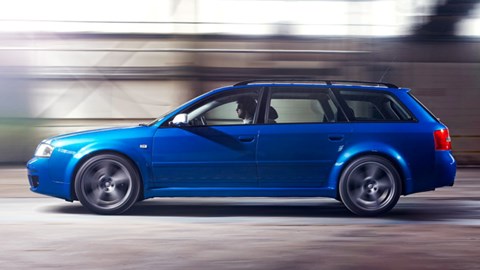
Price from new: £58,000-£66,675
Price now: £8000-£20,000
What list would be complete without a sensible family estate? Admittedly, this one has a 4.2-litre twin-turbo V8 with 444bhp.
Old Audis aren’t famed for their lightness of touch. But the RS6 is tighter than you might expect. Plus, you’re here for the engine really.
It manages to be a burbler and a screamer all rolled into one. The interior looks its age – complete with outdated/retro screen, but it most likely won’t feel its age.
Every 40,000 miles it needs a cambelt change plus oils and filters. Some cars will have replaced adjustable dampers with non-adjustable ones that prove more reliable. This is sensible, but if you’re looking to flog it in the future and break even, original cars are usually worth more.
Watch out for: Leaking adjustable dampers, patchy service history, aftermarket exhausts.
Porsche 944
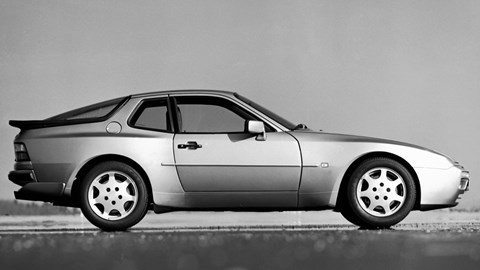
Price from new: £13,000
Price now: £2000-£30,000
Something a bit more classic-shaped for our final choice. Long-term enthusiasts might remember when good examples could be picked up for £1000. But in 2021, usable everyday examples are trading for between £7500 and £10,000.
The 944 is a beautiful steer. Simple, in a way that the rear-engined 911 can never be. Plus, you know, pop-up headlights.
Lots sold, loads of specialists, and long lists of variants. This means there’s plenty of choice. But watch out for spares, because not all parts are interchangeable between these variants.
Watch out for: Rusty wings, cracked balljoints, slipping clutch (a transmission-out job), leaking transmission oil.